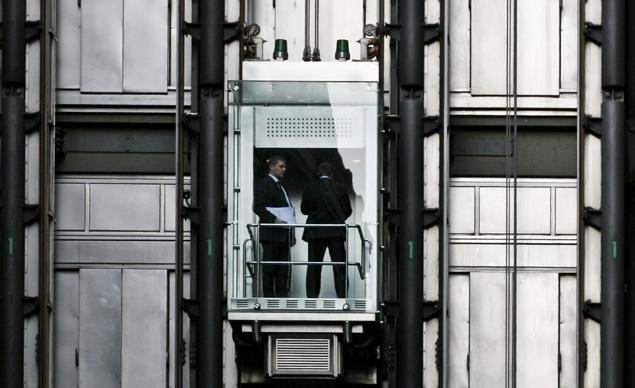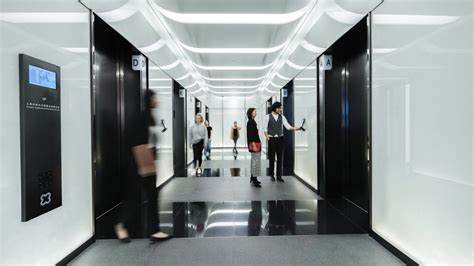Installing an elevator in the Philippines, whether for residential buildings, commercial properties, or public spaces, requires careful planning. This guide systematically outlines every key step from early preparation to post-installation maintenance, helping you efficiently and smoothly complete your elevator project.

Choosing the installation location is the first step to a successful elevator project. It is recommended to place the elevator near the central axis of the building or adjacent to load-bearing walls for balanced support and easier structural reinforcement. The location should also be close to major traffic routes, such as the living room, entrance hall, or staircase, for convenience.
The elevator shaft and machine room (if required) must be reserved during the initial architectural design stage. In general, the shaft should be 200–400 mm larger than the car size. Some modern elevators, such as MRL (Machine Room-Less) elevators, can save overhead space. Always refer to the technical drawings provided by the manufacturer for accurate space design.
Before building construction begins, the following items should be confirmed and planned based on the elevator scheme:
Load-bearing structure: The wall reserved for the elevator shaft must have sufficient load capacity, especially in steel or brick-concrete buildings.
Embedded components and wiring: Power lines, control cables, intercom lines, etc., should be laid in advance.
Shaft waterproofing and ventilation: Prevent a humid environment from affecting elevator operation.
Overhead and pit size: Ensure safe stop distance and installation of buffer devices.
Common elevator types in residential and commercial projects in the Philippines include:
Traction
Elevator
Driven by steel ropes and
counterweights, suitable for medium and high-rise buildings. Runs smoothly and
at faster speeds, commonly used in office buildings and apartments.
Hydraulic Elevator
Uses a hydraulic cylinder to push the car up and down.
Suitable for 2–5 story low-rise buildings. Easy to install and requires minimal
civil construction, ideal for villas and retail shops.
Machine Room-Less Elevator (MRL)
Eliminates the traditional machine room and
occupies less space. Widely used in modern homes and renovation projects,
especially suitable for limited-space environments.
Panoramic Elevator
Equipped with glass shafts or transparent cars. Commonly used
in shopping malls, hotels, and high-end residential areas to enhance visual
aesthetics.
When selecting the elevator type, consider factors such as the number of floors, spatial layout, usage frequency, and budget.

There are many elevator brands in the Philippine market, including international brands such as BDFUJI, Mitsubishi, Otis, and KONE, as well as active local or regional brands such as Inelex and elevator integrators like Local Elevators Solutions.
Selection can be based on a comprehensive assessment of budget, after-sales service, and brand reputation.
If you value product quality but have a limited budget, consider original factory elevator brands from China, such as BDFUJI. As a direct elevator manufacturer brand, BDFUJI can offer complete elevator solutions at near-cost prices while ensuring international quality (e.g., imported control systems and safety components), significantly lowering your procurement cost.
If you focus more on localized service experience—such as the ability to visit showrooms, have face-to-face communication, or require faster after-sales response—you may consider local Philippine brands with physical showrooms and service teams for more direct and convenient maintenance and communication.
Regardless of your preference, always prioritize product quality and long-term operational stability to make the best decision within your budget.
Technical maturity: Check whether the products are ISO or CE certified.
After-sales and parts support: Prefer brands with agents or service centers in the Philippines.
Installation lead time and delivery: Assess if there’s local stock and whether quick custom delivery is available.
Price and cost-effectiveness: Evaluate based on long-term operation and maintenance costs.
Residential elevators can be highly customized in style and should align with the overall home décor. For example:
Modern minimalist: Use glass shafts and brushed stainless steel.
European vintage: Champagne gold carved frames with wood grain interiors are recommended.
Minimalist white: Suitable for modern villas or high-end apartments.
Discuss materials for car walls, flooring, and ceiling with your designer to ensure visual consistency.
Before production, confirm the following core parameters with the manufacturer or agent:
Elevator model and drive system (hydraulic, traction, MRL, etc.)
Rated load and car size
Number of floors and stops
Door type (automatic, manual, etc.)
Power requirements and electrical interfaces
Safety configuration and optional features (intercom, camera, UPS, etc.)
It is recommended to sign a formal technical agreement and contract to safeguard project interests.
Installing an elevator involves multiple coordinated steps, usually including:
Preliminary communication and design
confirmation
Confirm key parameters such as
load, floors, size, style, and drive system. Sign technical agreements.
Synchronized civil construction
Reserve shafts, install embedded parts,
prepare pit and top space. Ensure dimensions match elevator drawings.
Manufacturing and transportation
The factory produces the elevator based on
confirmed drawings, typically within 20–45 days, and delivers it to the
site.
Formal installation stage
Conducted by a professional installation team,
including rail fixing, car assembly, counterweight installation, electrical
wiring, and door system tuning.
Testing and safety check
Includes system debugging, safety brake tests, and limit
switch inspections to ensure stable operation.
Government/third-party inspection
In the Philippines, most elevator projects
require final acceptance by a certified agency or municipal unit.
User training and handover
Explain daily operation, emergency handling,
and basic maintenance to the user before formal handover.
Shaft cleaning and size inspection: Ensure no obstructions and dimensions meet installation standards.
Stable power supply: Provide compliant voltage and independent power distribution box.
Avoid cross-work: Other trades should avoid working in the shaft during installation.
Certified workers: Installation must be conducted by qualified personnel or manufacturers.
After installation, local government or inspection agencies usually check the following:
Smooth operation and brake system test
Verification of all safety switches and emergency features
Function check of control panels and voice guidance
Posting of safety certificates and signage
Only after passing inspection can the elevator be officially put into use.

Elevators are long-term use equipment. It is recommended to conduct monthly or quarterly inspections by professional technicians, including:
Lubrication and tightening of drive systems
Calibration of control system parameters
Cleaning of car door tracks and inspection of limiters
Inspection of electrical systems and intercom functions
For elevators located near the coast or in humid areas, it is advised to increase the frequency of anti-rust and waterproof maintenance.
Elevator installation is a systematic project involving civil construction, electrical systems, mechanical parts, and aesthetics. Choosing the right brand, preparing the space and technology in advance, and following proper installation and maintenance procedures are key to ensuring safety and performance. Whether you are building a new house or upgrading an existing space, we hope this guide provides clear direction for your elevator project in the Philippines.
Previous None